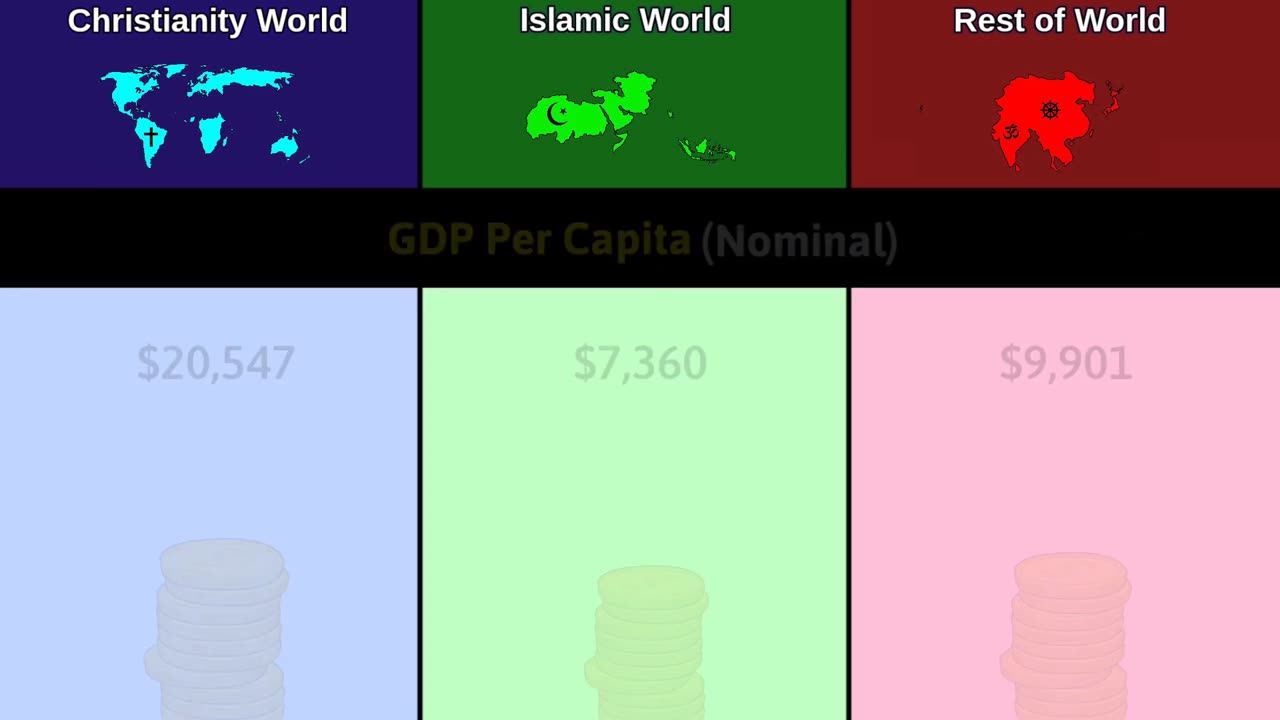Premium Only Content

Animated map shows how religion spread around the world
Certainly, here's an overview that prioritizes Islam above the other mentioned religions:
Islam: Founded in the 7th century CE, Islam is based on the teachings of the Prophet Muhammad as relayed through the holy book, the Quran. Originating from the Arabian Peninsula, Islam teaches monotheism and emphasizes the Five Pillars, which include Shahada (faith), Salat (prayer), Zakat (charity), Sawm (fasting), and Hajj (pilgrimage to Mecca). The religion spread rapidly across vast territories, from Spain in the West to the Indian subcontinent in the East, influencing vast swaths of culture, science, art, and philosophy. Today, Islam is one of the world's major religions, with diverse traditions like Sunni, Shia, and Sufism.
Hinduism: With its roots on the Indian subcontinent, Hinduism is among the world's oldest religions. A rich tapestry of rituals, philosophies, and traditions, Hinduism's key concepts include dharma, karma, and moksha, and it boasts a vast pantheon of deities.
Buddhism: Siddhartha Gautama, known as the Buddha, founded Buddhism as a response to certain practices in Hinduism. Focusing on the Four Noble Truths and the Eightfold Path, Buddhism seeks to address suffering and the cycle of reincarnation. Over the centuries, it spread throughout Asia, adopting many forms and traditions.
Christianity: Revolving around the teachings and life of Jesus Christ, Christianity emerged in the 1st century CE. Its sacred text, the Bible, guides believers, who are spread across various denominations including Catholicism, Protestantism, and Orthodoxy. With its historical and cultural impact, Christianity profoundly influenced the Western world.
Judaism: As one of the earliest monotheistic religions, Judaism traces its roots to the ancient Hebrews. The covenant between God and the Jewish people and the teachings of the Torah are central to Jewish beliefs and practices. Through millennia, despite challenges, Judaism has preserved its unique identity and traditions.
Each of these religions, with their rich histories and teachings, has significantly influenced various aspects of human civilization, from culture and science to politics and art. Their interactions and coexistence over millennia have left an indelible mark on the tapestry of human history.
-
 44:42
44:42
Tudor Dixon
3 hours agoBREAKING: The Truth About the Drones Invading America | The Tudor Dixon Podcast
3.04K3 -
 1:47:05
1:47:05
The Quartering
4 hours agoHuge Drone Update, Kamala To Run Again, CNN Commits Treason & Trump Trolls On Drones
92.6K48 -
 2:21:16
2:21:16
Nerdrotic
6 hours ago $7.02 earnedThe Last Jedi Still SUCKS | Superman Returns | An FNT Square Up - Nerdrotic Nooner 451
84.5K5 -
 LIVE
LIVE
StoneMountain64
5 hours agoHIGH TIER raids while on missions
99 watching -
 25:58
25:58
Page Six
5 days agoLIVE: Danny & Evan talk hot reality TV takes, Bravo news & answer fan questions! | Virtual Reali-tea
43K1 -
 1:22:35
1:22:35
Russell Brand
5 hours agoScience, Faith, and Totalitarianism: A Conversation with Dr. John Campbell- SF514
131K130 -
 LIVE
LIVE
hambinooo
7 hours agoTHE PUBG GOAT
152 watching -
 2:08:23
2:08:23
Steven Crowder
8 hours agoDrone Conspiracy: Is the Government Hiding Something Huge From the American Public?
538K310 -
 LIVE
LIVE
Right Side Broadcasting Network
7 hours agoLIVE REPLAY: President Trump Delivers Remarks to the Press - 12/16/24
3,788 watching -
 1:01:33
1:01:33
Grant Stinchfield
5 hours ago $7.64 earnedWhat is Behind the Mystery Drones? One Plausible Theory Emerges
61.6K12